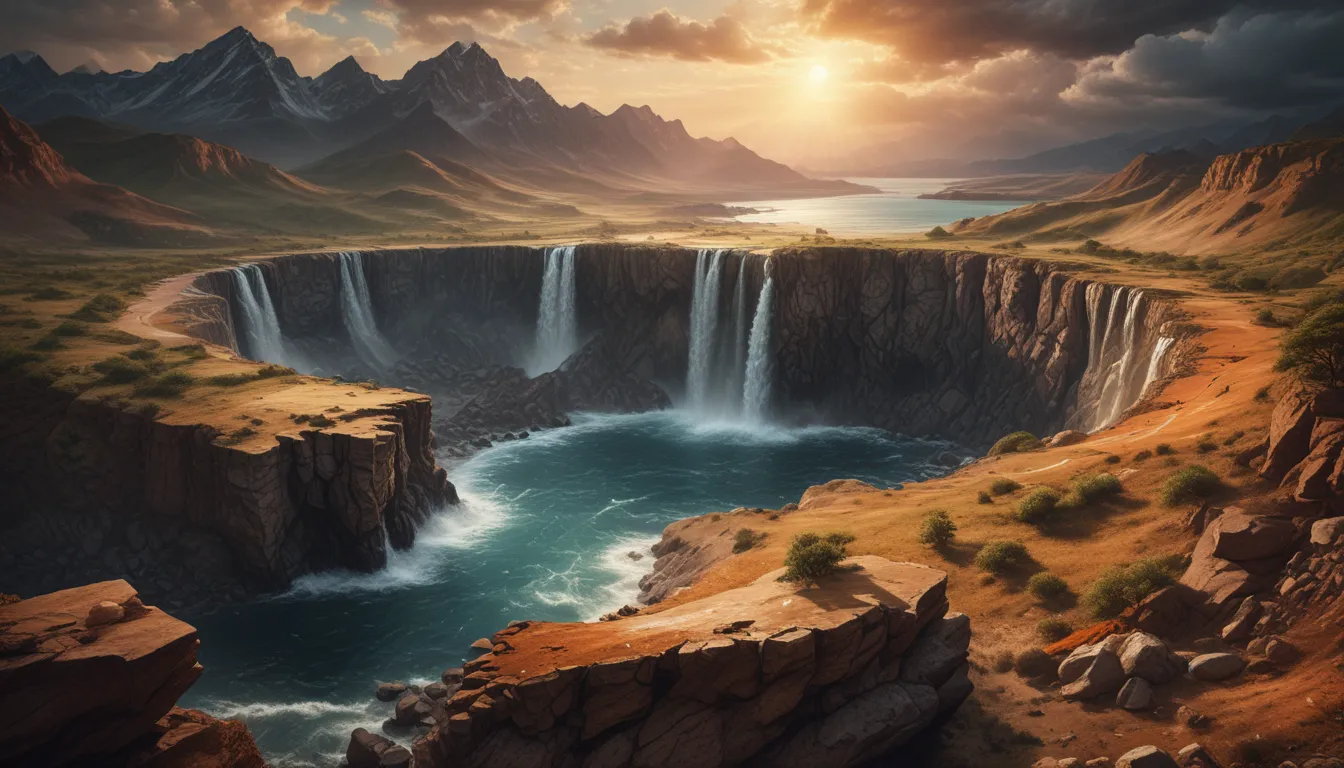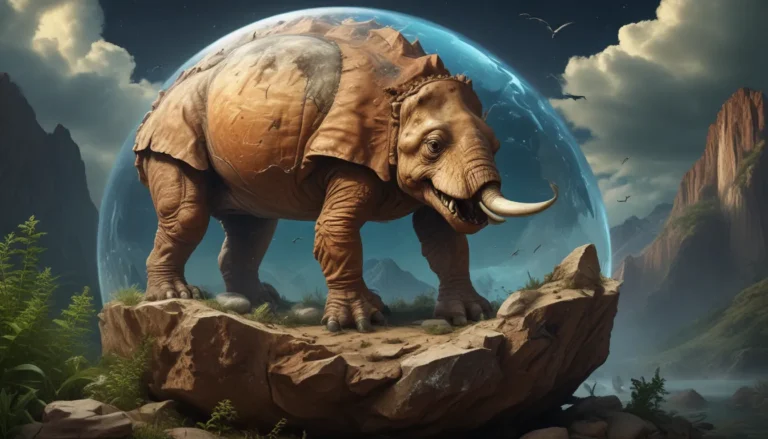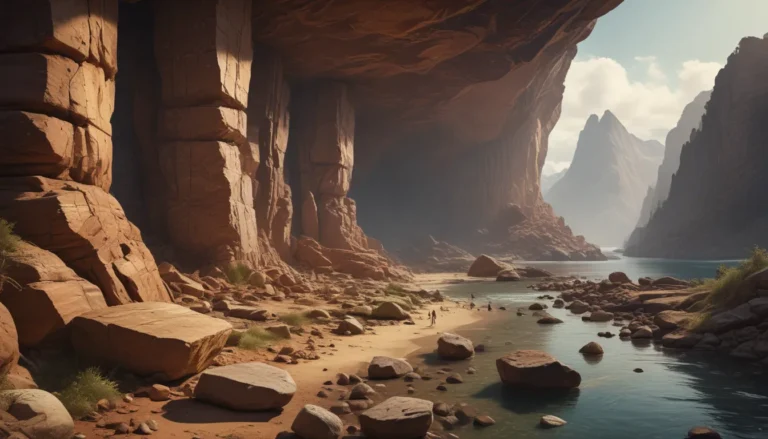A Note About Images: The images used in our articles are for illustration purposes only and may not exactly match the content. They are meant to engage readers, but the text should be relied upon for accurate information.
Tectonic basins have long been a subject of fascination for scientists and researchers, offering invaluable insights into the dynamic processes that shape our planet. From their formation to their impact on climate patterns and natural resources, tectonic basins hold a wealth of knowledge waiting to be discovered. In this comprehensive guide, we will delve deep into the world of tectonic basins and uncover 20 intriguing facts that will broaden your understanding of Earth’s geological wonders. Whether you are a passionate geology enthusiast or simply curious about the mysteries beneath our feet, this article is sure to enlighten you on the captivating secrets of tectonic basins.
Unveiling the Enigma: Understanding Tectonic Basins
Tectonic basins are geological features formed by the downward displacement of the Earth’s crust, creating low-lying depressions on the planet’s surface. These basins play a pivotal role in shaping landscapes, climates, and natural resources, offering valuable clues to Earth’s intricate history. Let’s explore some fascinating facts about tectonic basins that will give you a newfound appreciation for the beauty and complexity of our planet.
The Formation of Tectonic Basins: A Slow and Gradual Process
As the Earth’s tectonic plates shift and interact, areas of subsidence are created, leading to the gradual formation of tectonic basins. This process unfolds over millions of years, highlighting the intricate nature of geological transformations on our planet.
The Mediterranean Basin: A Tapestry of Rich History and Culture
The Mediterranean Basin stands as the largest tectonic basin in the world, encompassing several countries surrounding the Mediterranean Sea. Renowned for its diverse cultures and historical significance, this basin offers a glimpse into the multifaceted tapestry of human civilization.
The Great Rift Valley: A Majestic Example of an Extensional Basin
Stretching for thousands of kilometers, the Great Rift Valley in East Africa is a prime example of an extensional tectonic basin. Home to diverse wildlife and breathtaking landscapes, this geological marvel showcases the dynamic interplay of geological forces in shaping our planet.
The Role of Tectonic Basins in Natural Resource Formation
Tectonic basins are often associated with the accumulation of valuable minerals, oil, and gas deposits, making them crucial hubs for resource exploration and extraction. The Permian Basin in Texas and New Mexico, for instance, stands as one of the most productive oil basins in the United States, driving the country’s oil production for decades.
Climate and Ecosystem Influence of Tectonic Basins
Tectonic basins play a significant role in shaping climate patterns and ecosystems, giving rise to unique microclimates and supporting diverse plant and animal communities. The Okavango Delta in Botswana, nestled within a tectonic basin, experiences a semi-arid climate yet thrives as a lush oasis and a hotspot for wildlife.
Tectonic Basins as Geological Archives of Earth’s History
The layers of sedimentary rocks within tectonic basins serve as archives of past climates and environmental conditions, offering valuable insights into Earth’s ancient history. The Karoo Basin in South Africa, abundant with fossils, provides a window into prehistoric life and evolutionary processes.
Unraveling the Mysteries: Exploring Tectonic Basins Around the Globe
Tectonic basins exist in various forms and exhibit diverse characteristics across the globe, each contributing uniquely to Earth’s geological tapestry. Let’s delve into some intriguing examples that highlight the breadth and complexity of tectonic basins worldwide.
The Aral Sea: A Tale of Human Intervention and Environmental Consequences
Once one of the largest lakes in the world, the Aral Sea has drastically shrunk due to human intervention and tectonic basin activities. The diversion of its water sources for irrigation purposes has led to the desiccation of the lake, underscoring the delicate balance between human activities and environmental sustainability.
The Danakil Depression: An Oasis of Extremes and Unique Adaptations
The Danakil Depression in Ethiopia stands as one of the hottest places on Earth, characterized by extreme and harsh environmental conditions. Despite its challenging landscape, it hosts unique species adapted to survive in such extreme settings, showcasing the resilience and diversity of life in tectonic basins.
The Himalayan Basin: A Monsoon Influencer and Weather Modifier
Surrounded by towering mountain peaks, the Himalayan Basin exerts a profound influence on the monsoon climate in South Asia, shaping the timing and intensity of monsoon rains in the region. Its presence as a natural barrier impacts weather patterns and atmospheric circulation, underscoring the interconnectedness of geological features and weather phenomena.
The San Andreas Fault: A Tectonic Boundary of Seismic Significance
The San Andreas Fault in California serves as a prime example of a tectonic boundary that runs through a basin, posing a constant threat of seismic events in the region. Fault lines within tectonic basins can trigger destructive earthquakes, highlighting the seismic implications of geological features on human populations and infrastructure.
Unveiling the Beauty: Appreciating the Enigmatic Nature of Tectonic Basins
Tectonic basins stand as testament to the Earth’s geological history and the intricate processes that have shaped our planet over millions of years. From their role in natural resource formation to their impact on climate patterns and ecosystems, tectonic basins offer a window into the dynamic forces driving Earth’s evolution. As we continue to unravel the mysteries hidden within tectonic basins, we gain deeper insights into the complexity and beauty of our planet’s geological wonders.
Exploration and Discovery: Embracing the Wonder of Tectonic Basins
Exploring tectonic basins unveils a world of geological marvels and scientific inquiry, inviting us to appreciate the intricacies of Earth’s dynamic processes. Whether you are a seasoned geology enthusiast or a curious explorer, the enigmatic facts of tectonic basins promise to ignite your sense of wonder and curiosity about the natural world. As we embark on a journey of discovery and learning, let us celebrate the beauty and complexity of tectonic basins as vital components of Earth’s geological heritage.
FAQs: Navigating the World of Tectonic Basins
- What is a Tectonic Basin?
-
A Tectonic Basin is a large depression or low-lying area on the Earth’s surface, formed as a result of tectonic activity and geological processes.
-
How are Tectonic Basins formed?
-
Tectonic Basins are formed through a variety of processes, including the movement of tectonic plates, volcanic activity, erosion, and sedimentation.
-
What are the characteristics of Tectonic Basins?
-
Tectonic Basins are typically characterized by their low-lying nature, surrounded by higher elevation features such as mountains or plateaus. They often contain sedimentary deposits, including layers of rock and fossilized remains.
-
What role do Tectonic Basins play in Earth’s geology?
-
Tectonic Basins play a crucial role in Earth’s geology, responsible for the formation of mountain ranges, deep-sea trenches, and the redistribution of landmasses over time.
-
Are Tectonic Basins stable or prone to seismic activity?
-
Tectonic Basins can be either stable or prone to seismic activity, depending on various factors such as plate tectonics, the presence of fault lines, and the history of geological activity in the region.
-
Are there any famous Tectonic Basins?
-
Yes, some famous Tectonic Basins include the Great Rift Valley in Africa, the Basin and Range Province in the United States, and the Qaidam Basin in China.
-
Are Tectonic Basins important for natural resource exploration?
- Yes, Tectonic Basins are often rich in natural resources such as oil, gas, minerals, and groundwater, playing a significant role in natural resource exploration and extraction.
Final Thoughts: Embracing the Marvels of Tectonic Basins
In conclusion, tectonic basins symbolize the awe-inspiring complexity and beauty of Earth’s geological processes, offering a glimpse into the dynamic forces that have sculpted our planet over millennia. As we unravel the mysteries of tectonic basins and explore their diverse landscapes and ecosystems, we gain a deeper appreciation for the interconnectedness of Earth’s geological features and the profound impact they have on our lives. Let us continue to marvel at the wonders of tectonic basins, embracing them as windows into the captivating story of our planet’s evolution and diversity.
About Us
Our dedication to delivering engaging and trustworthy content is at the core of our mission. Each fact on our site is contributed by real users like you, bringing a diverse range of insights and information to our platform. To ensure the highest standards of accuracy and reliability, our team of editors meticulously reviews each submission, guaranteeing that the facts we share are not only fascinating but also credible. Trust in our commitment to quality and authenticity as you embark on a journey of exploration and discovery with us.






